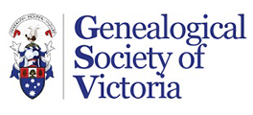
By Clive Luckman
It is fun, and very satisfying to compile your family tree, showing names, dates and relationships. I think it is more fun to put some flesh on those bones.
One of the interesting things that can be done is to discover your ancestors’ occupations. In the pre-industrial revolution times (say before the very early 1800s) the vast majority of the population lived in the country. That changed during the century and today something like 5% of the population lives in the country, at least in Australia, Europe and north America. Those very significant demographic changes together with the industrial revolution meant lots of the occupations, some very specialised, died out.
One of the by products of the industrial revolution was a rebellion of sorts. The “Machine Breakers” (as the name implies) damaged new machinery by way of a protest and in fear of losing their income. Some of the Machine Breakers were convicted and transported to Australia.
So occupations such as button makers became extinct as machines began to make buttons. One occupation that persists today, though in relatively tiny numbers, is the shoe maker. The general name for a shoemaker, even up to the early 1900s in Melbourne, was a Cordwainer (the word probably derived from a leather worker in Cordova, Spain). An important occupation. The function of making (rather than repairing) shoes had occupational sub-divisions: a Clicker cut the leather taking care to have minimum waste and selecting the best parts for the stretch and so on; a bracer attached the upper to the sole using waxed thread.
As an aside, until roughly the 1850s the same last was used for left and right hand shoes – in other words the shape of the left and right hand shoes was the same. A horrifying thing today.
One of the sources of occupations in England and the US is the census. In both cases the occupation is recorded. The relatively recent English 1921 census include these occupations: Baubler, Lurer, Bear Breaker and Maiden Maker – I hesitate to search for the definitions of these.
Australian sources include birth, death and marriage certificates which include the occupations. But these details began on 1 July 1853 and before that we rely on Church records of Baptisms, Marriages and Funerals which lack a note of the occupations.
As with any research one needs to be critical of the evidence. One of my wife’s US ancestors was described as being engaged in “Mercantile and railroading” in a book written about the family in 1903. Sounds rather grand to me. In another document he claimed to have been be an engineer with the Brunswick and Albany Railroad. But the most credible evidence is that he was a ticket collector on the trains of that Railroad.
***
This article (June 2007) by Clive Luckman of GSV was previously published in Fifty-Plus News .
At the Genealogical Society of Victoria we have expert volunteers to help members find where details of occupations can be found, and help solve the many problems encountered by family historians. See www.gsv.org.au for more information, or email gsv@gsv.org.au, or phone +61 3 9662 4455 for information about the Society.

